前言
此篇是小嘟对链表题的一些做题思路与实现!如果有错误的地方!请务必在评论区指出,小嘟会认真仔细的学习了!
一、反转链表
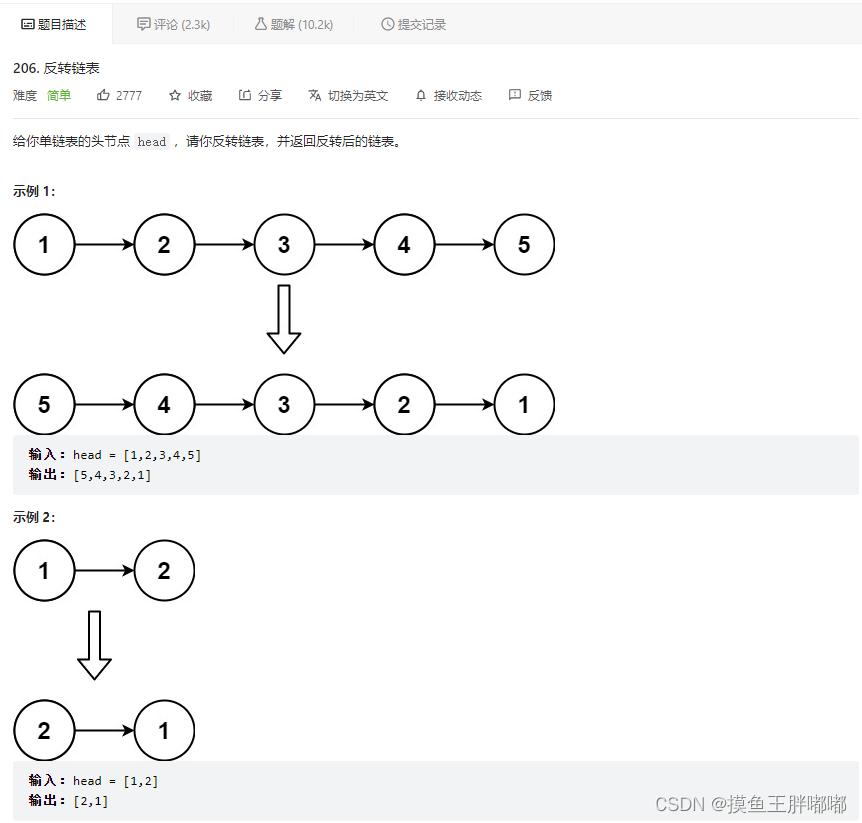

1.1 迭代
假设链表为1→2→3→∅,我们想要把它改成∅←1←2←3。
在遍历链表时,将当前节点的next 指针改为指向前一个节点。由于节点没有引用其前一个节点,因此必须事先存储其前一个节点。在更改引用之前,还需要存储后一个节点。最后返回新的头引用。
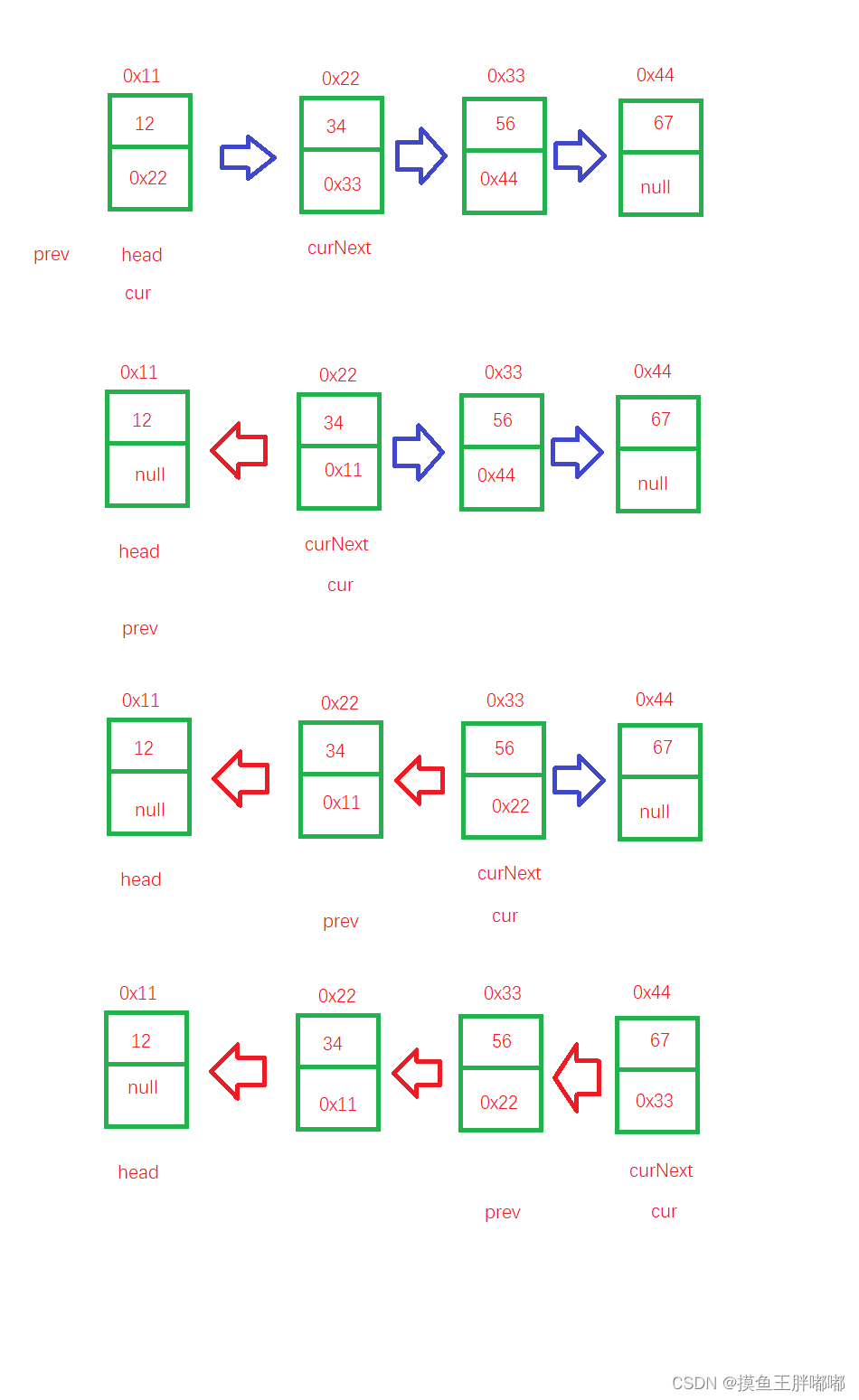
class Solution {
public ListNode reverseList(ListNode head) {
if (head == null) return null;
ListNode prev = null;
ListNode cur = head;
while (cur != null) {
ListNode curNext = cur.next;
cur.next = prev;
prev = cur;
cur = curNext;
}
return prev;
}
}

复杂度分析:
- 时间复杂度:O(n),其中 nn 是链表的长度。需要遍历链表一次。
- 空间复杂度:O(1)。
1.2 递归
思路:用递归函数不断传入head.next,直到headnull或者heade.nextnull,到了递归最后一层的时候,让后面一个节点指向前一个节点,然后让前一个节点的next置为空,直到到达第一层,就是链表的第一个节点,每一层都返回最后一个节点。
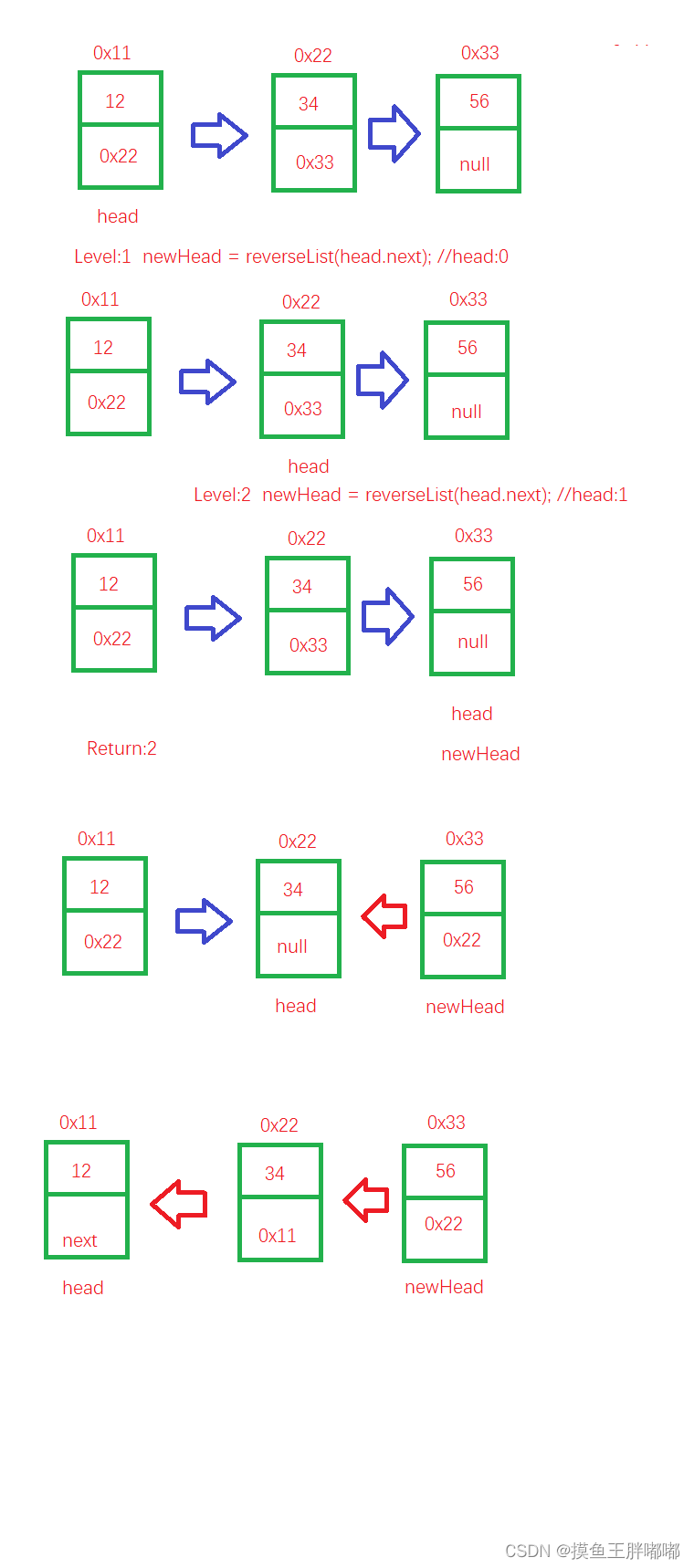
class Solution {
public ListNode reverseList(ListNode head) {
if (head == null || head.next == null) {
return head;
}
ListNode newHead = reverseList(head.next);
head.next.next = head;
head.next = null;
return newHead;
}
}
复杂度分析:
- 时间复杂度:O(n),其中 n 是链表的长度。需要对链表的每个节点进行反转操作。
- 空间复杂度:O(n),其中 n 是链表的长度。空间复杂度主要取决于递归调用的栈空间,最多为 n 层。
二、移除链表元素
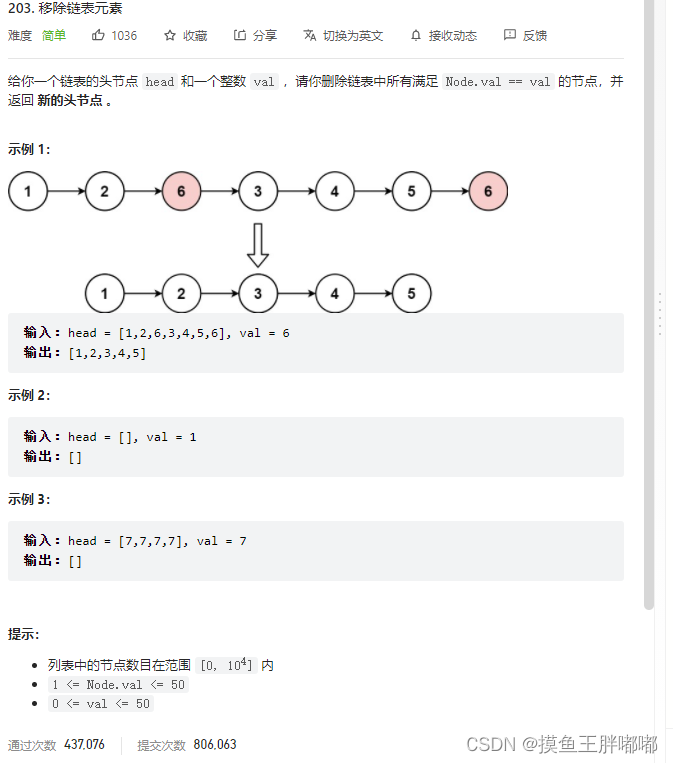
2.1 迭代
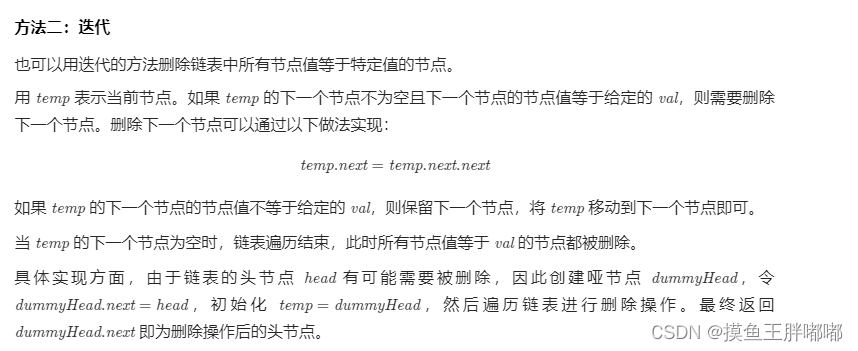
class Solution {
public ListNode removeElements(ListNode head, int val) {
if (head == null) return null;
ListNode prev = head;
ListNode cur = head.next;
while (cur != null) {
if (cur.val == val) {
prev.next = cur.next;
cur = cur.next;
} else {
prev = cur;
cur = cur.next;
}
}
//最后处理头
if (head.val == val) {
head = head.next;
}
return head;
}
}
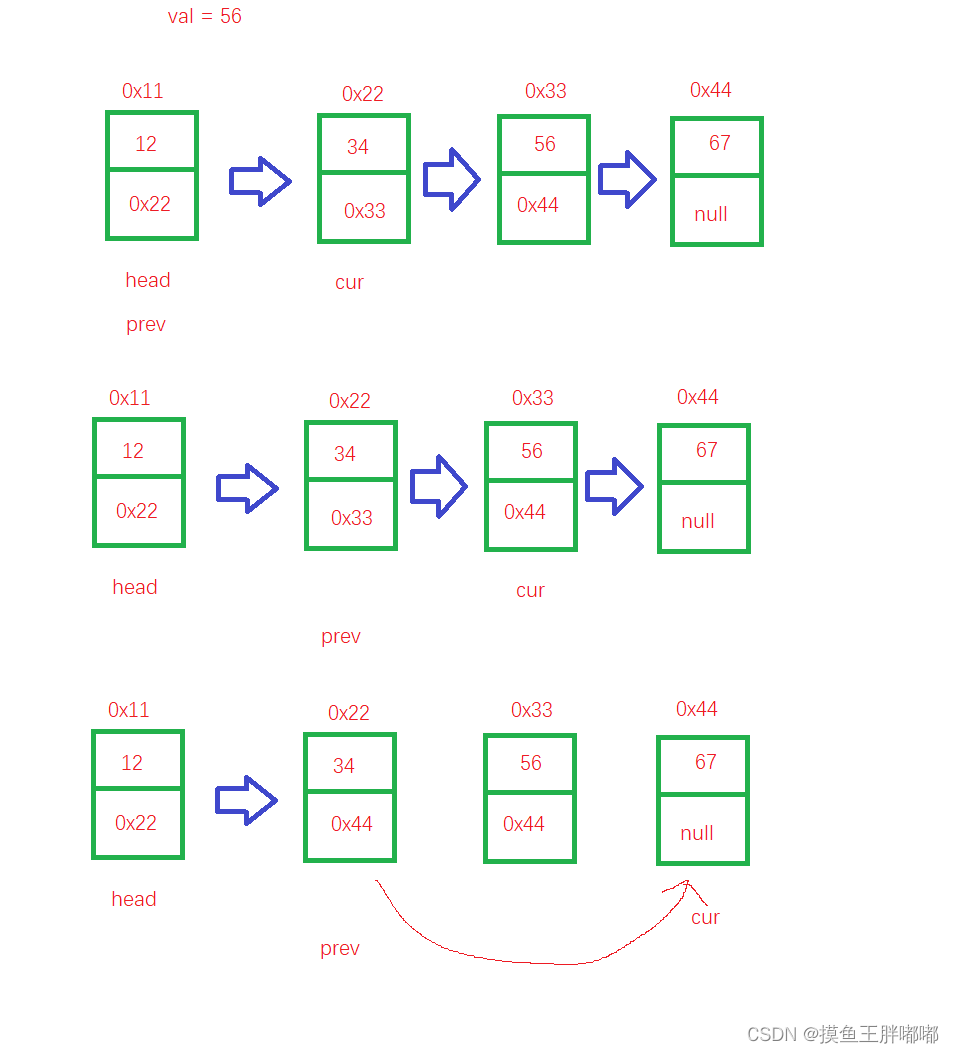
三、链表的中间结点
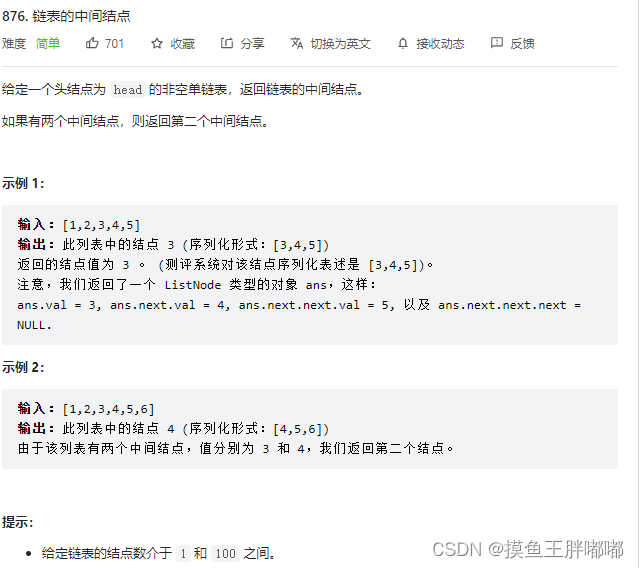
3.1 快慢指针
用两个指针slow与fast一起遍历链表。slow一次走一步,fast一次走两步,那么当fast到达链表末尾时,slow必然位于中间。
class Solution {
public ListNode middleNode(ListNode head) {
if (head == null) {
return null;
}
ListNode fast = head;
ListNode slow = head;
while (fast != null && fast.next != null) {
fast = fast.next.next;
slow = slow.next;
}
return slow;
}
}
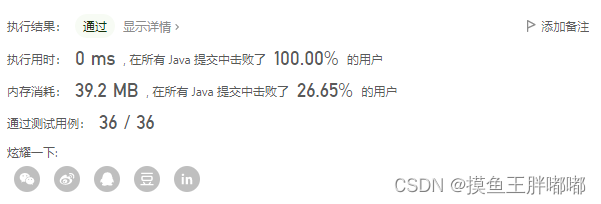
四、链表中倒数第k个结点
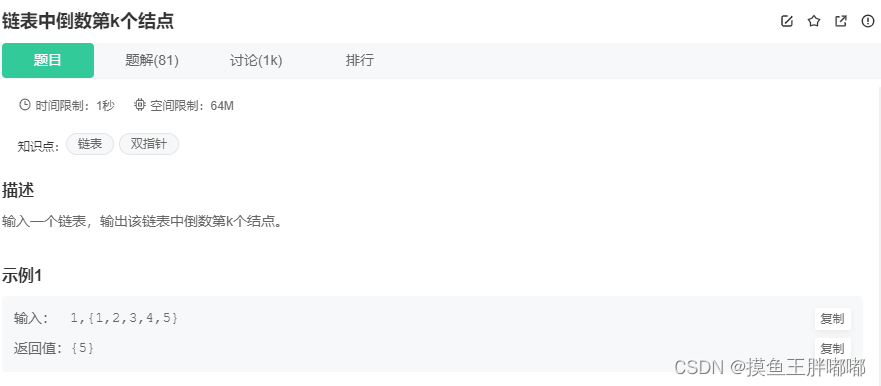
4.1 快慢指针
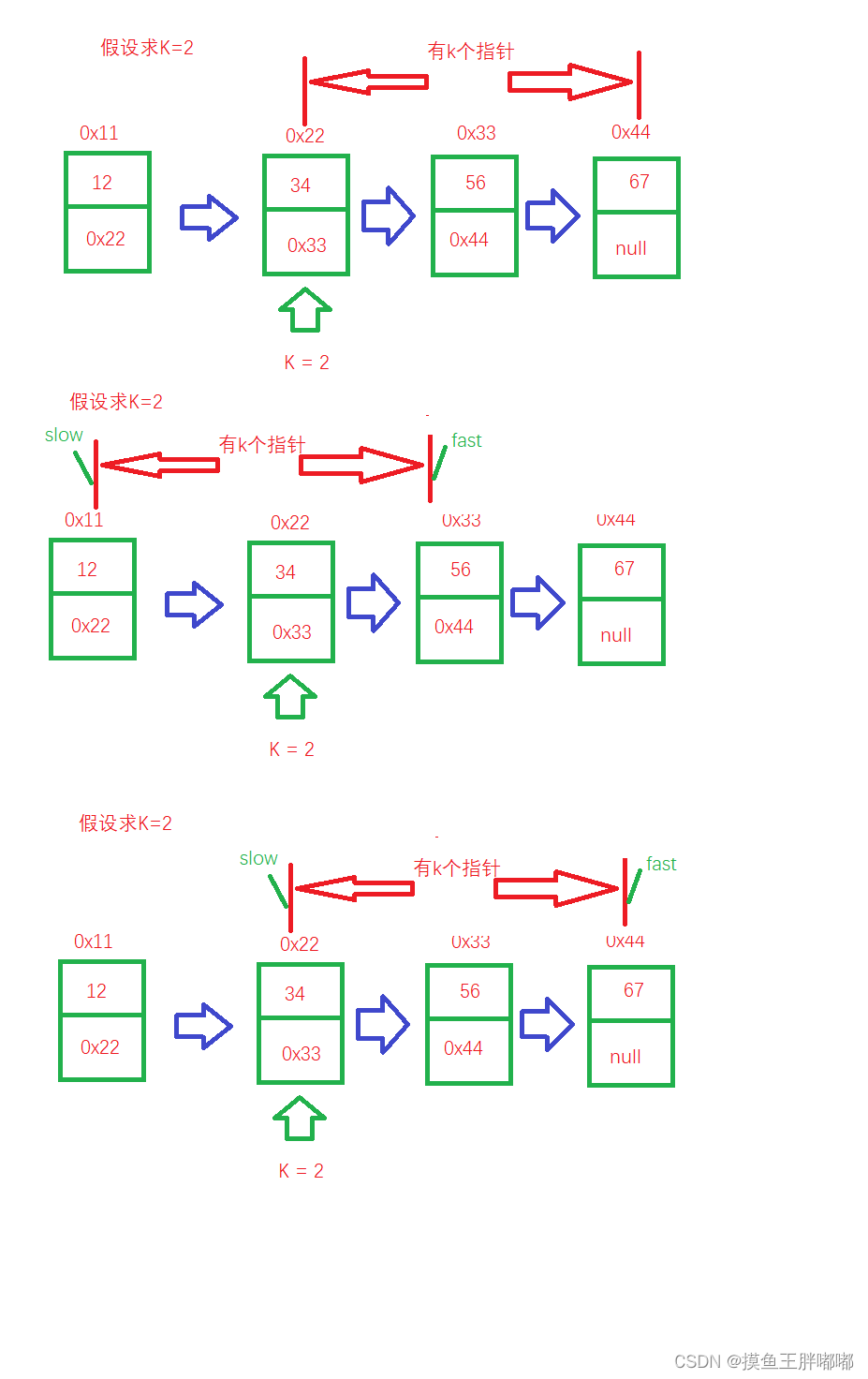
public class Solution {
public ListNode FindKthToTail(ListNode head, int k) {
if (k <= 0 || head == null) {
return null;
}
ListNode fast = head;
ListNode slow = head;
while (k - 1 != 0) {
fast = fast.next;
if (fast == null) {
return null;
}
k--;
}
while (fast.next != null) {
fast = fast.next;
slow = slow.next;
}
return slow;
}
}
复杂度分析:
- 时间复杂度:O(n),不管如何,都只遍历一次单链表
- 空间复杂度:O(1)
本文含有隐藏内容,请 开通VIP 后查看